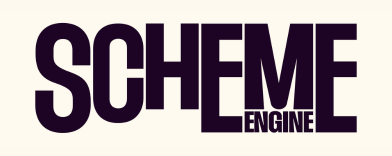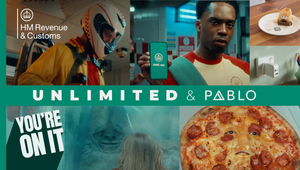
'UV-U-SEE': Pablo’s Innovation Shines a Light on Hidden Dangers in Construction

What began with a shocking statistic and a personal story has become one of the most innovative pieces of behaviour-changing work the advertising industry has seen in recent years.
Pablo’s 'UV-U-SEE' project, centred around a UV-reactive ‘Higher-Vis Vest’, targets a devastating but preventable truth that construction workers make up just 8% of the UK workforce but account for 44% of occupational skin cancer deaths.
Backed by powerful partnerships and more than two years of R&D, the campaign goes beyond awareness – using design, technology, and emotion to deliver a real-world intervention.
We sat down with Pablo’s executive creative director Ray Shaughnessy to unpack the creative journey behind 'UV-U-SEE' and how this initiative is setting a new benchmark for purpose-driven work.

LBB> What was the original insight that led Pablo to conceive of the 'UV-U-SEE' campaign, and why did you decide to focus on construction workers specifically?
Ray> 'UV-U-SEE' is a deeply personal project for Pablo. Hannah Penn, one of our joint MDs, was diagnosed with melanoma shortly after the birth of her second baby. When researching what possible effect that might have had on her unborn child, Hannah happened to find the staggering statistic around construction workers accounting for 8% of the UK workforce, but 44% of occupational skin cancer deaths. But positively, 86% of cases are preventable. So it struck us as a real world problem that with the right intervention, could lead to a change in behaviour that would immediately save lives.
That was enough for Hannah to put the full force of the agency behind it, to use our experience in building awareness and changing behaviour to help a group at disproportionate risk of death. Not through ads but actions, by trying to introduce something that could make visible an invisible danger, in the moment when it mattered to alert construction workers to a very live risk.
LBB> Tell me what the development process for the Higher-Vis Vest involved -- what were the biggest technical or design challenges around embedding the UV-sensitive technology into workwear?
Ray> Although 'UV-U-SEE' is a holistic system of skin protection, the Higher-Vis Vest really is at the heart of the project. On-site vests are synonymous with safety, so we knew that we wanted to integrate a nudge mechanic into that, but the biggest obstacle was around integrating that badging system seamlessly, and in a way which didn’t impact the primary job of the hi-vis vest. There is rightly complex compliance and regulation which PPE equipment needs to pass to be site compliant.
In our early months of development, we leaned into the design challenge of how we could create something which changed enough to meaningfully alert the wearer, without changing so much that it interrupted the primary function of the vest. It had to be keep the wearer visible at all times.
After approaching a number of hi vis manufacturers, it was Leo Workwear who generously and so enthusiastically put their arms around this project with us, so that we could build prototypes with the experience and expertise we needed to ensure onsite compliance. With that assurance, we went back to the drawing board with a creative technologist. We created an over-complicated beta version that worked, but was clunky and needed batteries. Making a lightweight jacket suddenly became cumbersome and meant that its unit price would prohibit the initiative from meaningfully being able to scale in the real world. So, we started looking at other materials that were UV-sensitive, like the stickers that you can put on clothing, that are one-use and small. We wondered if we could somehow enclose that UV-sensitive material and started a prototyping process with a brilliant factory in China.

LBB> How did the partnerships between Pablo, LifeJacket Skin Protection, Leo Workwear, Consideration Constructors Scheme and the National Federation of Builders come about?
Ray> Honestly, the power of Hannah’s personal story has given this project the most unbelievable velocity. As someone who has lived through melanoma and faced her own mortality in a very frightening way, she could look every partner in the eye when she said that she believed that construction workers deserved protection. And because of the statistic that sits at the heart of why this innovation is needed, it’s sadly inevitable that speaking with people who work in construction, you quickly find people who have been personally impacted in some way by melanoma, who have taken the cause on as their own.
Really, this is a heartwarming story about the power of cold calling. All of our essential launch partners picked up the phone or answered an email from a complete stranger at Pablo, and were willing to lend us their time to understand more about what we were trying to achieve. From that point onwards, they have thrown their expertise, credibility and resources around this project to give it the scale and legitimacy it needs to meaningfully mark the start of a new health and safety standard in construction.
LBB> What kind of testing or prototyping did you need to do to ensure the technology was effective and practical for everyday on-site use?
Ray> Working with leading workwear specialists Leo Workwear, already meant that we had a premium product that we were badging, so we had zero worries over the legitimacy of the vest itself.
Once we had established our approach, it was the silicon logo that went through many many different iterations to be as unobtrusive in terms of weight, while also being as visible as possible in terms of impact. As well as using small construction firms to trial the vests on small sites, the team and our families wore them, so that we all also understood how they felt and behaved. From start to finish, the development of the silicon logo alone took 11 months.
LBB> This campaign aims to change construction-worker behaviour – what considerations did you take into account to ensure the message resonated?
Ray> Every single campaign touchpoint was directed at the construction industry. We adopted the statistics in a strong and arresting way, paired with the message: ‘U DESERVE PROTECTION’. We wanted workers and their bosses to really feel the implications of the campaign. In Australia, construction regulations are completely different – if you’re operating a construction site, you will be shut down if you’re inspected and can’t evidence adequate onsite skin protection. We wanted to plant a seed within construction workers' minds that they are also worthy of this level of protection – it should be as essential as the hard hat and boots they have to wear everyday.

LBB> How, if at all, do you envision the 'UV-U-SEE' system being scaled or adapted beyond construction?
Ray> Once we had perfected the silicon logo, it immediately became obvious that there were so many different applications for it. We have had a huge number of enquiries not just from the construction industry, but the events and outdoor workers industries. We’ve focused on the construction sector for launch but sadly, the statistics surrounding melanoma are stark wherever you look; and cases have tripled in the last 30 years. It’s now the fifth most common cancer in the UK. As cases and awareness rise, we anticipate a product like this being as valuable for a mother in the park with young children, as it is for outdoor festival workers across the summer months – the applications are endless and we’d love to continue to work with partners to really stop the rising march of melanoma rates in the UK.
LBB> In your view, how can advertising continue to evolve into a tool for solving real-world problems, rather than just raising awareness?
Ray> If you have that approach to creative problem-solving in your DNA like Pablo does, then being action-oriented is second nature. It does mean starting with the problem and not with a preconceived PR-driven outcome. This project took over two years in the making and advertising agencies aren’t used to working within longer timeframes, especially on projects that showcase creativity.
The truth is that the innovation process requires a humble mindset. We knew nothing about creating a product like this and very little about the construction world before we began, but as with any client, we really dived into the subject. It’s been a joyous, but demanding learning experience for us all and we’re incredibly proud of what we’ve achieved. The more agencies willing to adopt a different mindset and use their smarts to solve real world problems, the better.













